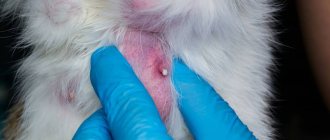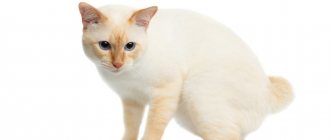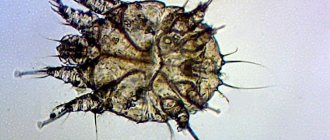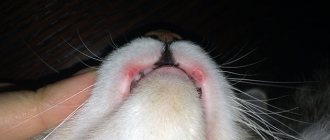Save the article:
The inflammatory process in the mammary glands of a cat is a serious and serious disease that requires timely diagnosis and immediate treatment. Veterinarians identify several causes of mastitis in cats. The disease occurs in different forms, but in each case the animal needs veterinary care. Owners of cats need to know the basic methods of prevention in order to prevent the development of the problem and its unpleasant consequences.
Causes of mastitis in cats
global $ads_google; //data-ad-slot=”2475549904″ $ads_google = empty($ads_google) ? false : true; ?> if ($ads_google == false) {?>
$ads_google = true; ?> } ?>
Factors that initiate mammary gland pathology can be very different. They concern both the physiology of the animal itself and environmental conditions. The claim that mastitis only occurs in lactating cats and does not occur in cats that have been neutered is a misconception. Practice shows that mastitis occurs in cats in any condition. Precipitating conditions include:
- Injuries, mechanical irritation in the gland area.
- Infection of tissues through cracks in the nipples.
- Gynecological and urological diseases.
- Stagnation of milk due to early weaning of kittens from their mother.
- Blockage of the milk ducts for physiological reasons.
- Stillbirth of cubs in the same litter.
- Complications after cesarean section.
- Violation of hormone synthesis during estrus, false pregnancy.
The development of mastitis in cats is facilitated by hypothermia and a weakened immune system.
How to avoid illness
In order to avoid developing mastitis, you need to take some precautions that will help avoid problems in the future. Very often the cause of the disease is hypothermia, so a pregnant or lactating cat should live in a warm and dry room without drafts. It is better to move a pet living outside for a while indoors.
The second common cause of mastitis is infection. Kittens may accidentally scratch or damage the skin around their nipples while feeding. This, in turn, will lead to infection in the wounds and inflammation. You can avoid this outcome by regularly removing animal bedding and washing the kittens’ paws. A person should wash their hands thoroughly before touching a cat's belly.
A preventive measure that is of great importance is a proper balanced diet. You can choose special dry food for your pet. It would be good if it belongs to the premium class. Before purchasing a mixture, it is better to consult a veterinarian or breeder so as not to harm the health of the animal.
It is very important to wean kittens correctly. When babies begin to eat on their own, the cat's mammary glands need to be bandaged. This way you can reduce the amount of milk produced and protect your pet from infection.
Forms and types of mastitis
The nature of the process depends on the symptoms and the type of pathogen. Mastitis in cats is classified into purulent, catarrhal, serous, fibrous, hemorrhagic, gangrenous. Each form is characterized by its own degree of severity, while one variety can transform into another.
Purulent mastitis
Pathogenic flora causes the accumulation of pus in the mammary cavities, which is released along with milk. With purulent mastitis, the presence of blood in the discharge is often noted. The mammary glands swell, turn red, and become noticeably hot and painful.
Further development of the disease causes general hyperthermia (a rise in temperature above normal), intoxication and depressed behavior. If pus appears in the milk, the kittens are separated from their mother to avoid poisoning.
Fibrinous
Changes in connective tissue provoke complete blockage of the milk ducts. There is an increase in lymph nodes, severe hyperemia and increased density of the mammary glands.
Any touch to them causes pain in the cat. With fibrous mastitis, intoxication of the body begins. Behavioral symptoms appear: the cat becomes lethargic and passive.
Serous
This type of mastitis in cats is characterized by general or partial redness of the integument and the release of a grayish secretion from the nipples.
If a female feeds kittens, the secreted milk acquires a thinner consistency, flaky impurities are noticeable in it, and an unpleasant odor is felt. The skin covering the glands thickens or swells. With serous mastitis, the mammary glands increase in size, and the cat indicates pain upon palpation.
global $ads_google; //data-ad-slot=”2475549904″ $ads_google = empty($ads_google) ? false : true; ?> if ($ads_google == false) {?> $ads_google = true; ?> } ?>
Catarrhal
With this form of the disease, blockage of the ducts is observed. This provokes stagnation of milk secretion in the glands and increased proliferation of pathogenic microorganisms. Milky discharge has a characteristic unpleasant odor. Clots in the form of flakes are noticeable in the milk. Symptoms of catarrhal mastitis resemble a picture of a serous form.
Hemorrhagic
Due to minor hemorrhages in the tissues of the glandular organ, blood enters the ducts and is excreted with milk. The milk-secreting organs swell and become painful. From the outside, hematomas are visually detected.
Symptoms of mastitis can affect one or more glands at the same time.
Gangrenous
If the inflammation is not treated, necrosis begins in the mammary glands. Local tissue rejection becomes general and gangrene begins. External symptoms of gangrenous mastitis are blue, purple, brown, black spots. Painful ulcers and bleeding appear on the affected areas.
Kinds
There are several forms of the disease. The initial stage is usually accompanied only by redness and slight swelling of the nipple, and a slight increase in body temperature. It often goes unnoticed by humans. If left untreated, it progresses to more severe forms of mastitis:
- Serous . The mammary glands enlarge significantly. They become hot and hard, and the cat reacts painfully to touch. When pressed, liquid with white flakes is released from the nipple.
- Catarrhal . When pressed, a liquid is released, the consistency of which is similar to sour milk.
- Fibrinous . Characterized by increased body temperature and enlarged lymph nodes. On palpation, “crunching” sounds are heard.
- Purulent - a complication of previous forms. An unpleasant-smelling fluid mixed with blood and pus is released from the chest. In most cases, at this stage the disease becomes chronic. The mammary glands fill with connective tissue, which can lead to a lack of milk in the future.
The hemorrhagic form is the most severe. Extensive hemorrhage occurs in the skin and mammary glands, staining the tissues bright red. The animal's temperature rises and it becomes feverish. Surgery required.
Methods for diagnosing mastitis
The very beginning of the disease may be missed due to a blurred clinical picture. Further development contributes to a more pronounced manifestation of symptoms. Diagnosis of mastitis in a cat consists of visual examination, palpation, ultrasound and laboratory tests. After which treatment is prescribed.
Blood is taken from the animal to determine the total number of cells and hemoglobin. To determine the degree of inflammation and the pathogen, an analysis of discharge from the mammary gland is performed. This cytological study also helps to determine the nature of inflammation. A high number of dead epithelial cells indicates the fibrous, catarrhal, serous type. An increased number of red blood cells and platelets diagnoses the hemorrhagic form.
The ultrasound method helps determine the localization of the pathogenic process, the condition of the ducts and the presence of fluid in them. Ultrasound checks the condition of the glandular cavities and the tissues of the glands themselves. Diagnostics makes it possible to distinguish mastitis from less dangerous mastopathy, adenoma, and benign growth of glandular tissue.
Establishing diagnosis
What to do if a cat is suspected of having a mammary tumor - only a veterinarian knows (it is advisable to visit an oncologist). The sooner a cat is shown to a specialist, the fewer complications will arise with its health and the greater the chance of a successful outcome of the disease.
When examined in a veterinary clinic, a cat undergoes a number of diagnostic procedures:
- Examination with palpation and collection of anamnesis (medical history).
- Taking blood for laboratory tests of the animal’s general condition.
- Biopsy of pathological material (a piece of the neoplasm is examined under a microscope and allows us to determine the type of pathology with 100% certainty).
- Ultrasound or X-ray examinations (prescribed to identify the stage of development of the disease and determine the location of metastases).
Having received the results of the examination, it will not be difficult for the veterinarian to make an accurate diagnosis and prescribe appropriate treatment, taking into account the age and other characteristics of the cat.
An important point in diagnosing a neoplasm is differentiation from ailments with similar symptoms (mastitis, multiple insect bites), the treatment of which is expected to be completely different.
Why is mastitis dangerous?
global $ads_google; //data-ad-slot=”2475549904″ $ads_google = empty($ads_google) ? false : true; ?> if ($ads_google == false) {?>
$ads_google = true; ?> } ?>
Purulent inflammation of the mammary glands threatens to spread to other organs without treatment and result in general sepsis. Such a serious condition is fraught not only with intoxication, but also with the death of the animal. Kittens suffer no less, receiving, at best, defective milk, and at worst, poisoned milk. The death of babies due to purulent mastitis in cats often happens.
An advanced form may require the help of a surgeon
Advanced mastitis often develops into a chronic form. In case of hypothermia or weakened immunity, the cat’s glands begin to become inflamed. The cavities that were previously filled with pus are overgrown with connective tissue. The mammary gland loses its ability to function normally. Another danger is the possible degeneration of glandular tissue. This is how tumors of both benign and malignant nature appear.
Strict hygiene and proper cat care
In the first few days after birth, the pet needs increased attention from the owner. Properly organized care for a cat who has given birth and her offspring will avoid serious complications such as mastitis, and the recovery process will be as easy as possible.
It is necessary to organize care for a woman in labor in such a way as not to harm the cat. There is no need to cross the boundaries of obsession. It is important to observe, but try not to disturb the animal unnecessarily. Strict adherence to hygiene and organization of proper care consists of several main points:
- the place where the cat gave birth to kittens should be located in a dark, secluded place;
- the nest should not be in a draft;
- there should be no noisy devices at the location of the box;
- the bedding should always be kept clean (disposable diapers are best).
If a room in which the air temperature is lower than it should be, place a bottle of warm water in the nest. You can use an electrically heated mat, but you will need to follow safety precautions. Some breeders have infrared lamps in their arsenal that allow them to maintain the required temperature in the room.
Near the nest, it is recommended for the cat to place a bowl of water and food, as well as a cat litter box. This will allow the cat to leave the nest for a short time.
Find out more How to care for a cat after giving birth>>>
Treatment of mastitis
Conservative therapy uses antibiotics and immunocorrective medications. In more severe cases, surgical intervention is resorted to. The duration of treatment for mastitis in a cat is determined by the form of the disease:
- serous - 5-7 days;
- fibrinous - 5-10 days;
- purulent - 14 days;
- gangrenous - 25-30 days;
- hemorrhagic - 10-15 days.
Antibacterial treatment includes cephalosporins (Cefazolin, Cephalexin) or penicillins (Amikacin, Ampicillin). If a fungal infection is added to a bacterial infection, the patient is treated in parallel with antifungal drugs: Griseofulvin, Amphotericin.
When the inflammatory process goes too far, the cat is operated on: the abscessing boils are opened, the purulent contents are removed, and the cavities of the milky lobes are cleaned. In some cases, a partial or complete mastectomy (removal of the breast) is indicated. After surgery, the animal requires a long rehabilitation period.
Anesthesia
If the pain syndrome is severe, the cat is given a novocaine blockade before starting treatment. To do this, an injection is made into the fat layer between the affected area and the peritoneum with a 0.5% or 1% solution of novocaine. The dose depends on the weight of the pet: for every kilogram of weight, take 1 ml of the drug. At the same time, an antibiotic is added to the syringe. Anesthesia is repeated at intervals of two days until the pain symptom completely disappears.
Strengthening the immune system
To strengthen the body's defenses, the cat is prescribed complex dietary supplements. Vitamins and minerals support the immune system and help quickly neutralize the inflammatory focus. The vitamin preparation is fed to the animal for two months. Immunomodulators also provide support: Neoferon, Globfel, Catozal and others. The immunoglobulins and plant extracts they contain stimulate your own immunity.
Treatment of congestive form
If stagnation of milk is noted, it is necessary to carry out procedures to stimulate its outflow. Diuretics are prescribed among medications. They promote faster removal of fluid from the body, thereby slightly reducing the flow of water into the mammary glands.
global $ads_google; //data-ad-slot=”2475549904″ $ads_google = empty($ads_google) ? false : true; ?> if ($ads_google == false) {?>
$ads_google = true; ?> } ?>
Treatment of stagnant mastitis includes antiseptic compresses made from Chlorhexidine. The solution is heated to body temperature, a sterile gauze cloth is moistened in it, lightly squeezed and applied to the sore spot. Cover the compress with polyethylene and bandage it. Keep the bandage on for 10-15 minutes. An alternative to Chlorhexidine can be ichthyol or chloramphenicol ointment, infusions of medicinal herbs with an antibacterial effect.
Treating cat mastitis at home
Complicated types of mastitis in cats require the help of a veterinarian. You can treat a sick pet at home only with catarrhal or serous mastitis. The owner has the power to alleviate the animal’s condition and speed up the treatment of mastitis. To do this, it is permissible to use a light stroking massage. If touching causes pain or discomfort in the cat, tactile stimulation is abandoned. Rubbing with ichthyol or camphor oil helps. The product is applied after the massage. The smeared surface is covered with film and bandaged.
When the mammary glands of a nursing cat become overfilled and tense, they resort to expressing milk. To limit secretion production, reduce the amount of water in the bowl. It is advisable to switch the cat to dry food and give water only when feeding.
The most important thing when treating mastitis in a cat is to follow all the instructions prescribed by the doctor.
When it is impossible to treat
The cat owner should recognize symptoms that indicate the inadmissibility of self-treatment at home. If at least one of them appears, you should urgently seek help from a specialist. This list includes:
- soreness and severe hardening of the glands;
- enlargement of nearby lymph nodes;
- cloudy discharge from the nipples with traces of pus and blood;
- fever, fever.
Severe disease requires medical intervention. Treatment of mastitis in such cases consists of a complex of analgesic, antibacterial, and immunomodulatory medications.
Folk remedies
It is useful for a sick cat to apply warm compresses to the area of the affected organ. Decoctions or infusions of chamomile, oak bark, sage, string, and birch leaves are used as a medicinal liquid. To prepare the drug, one tablespoon of herb or collection is poured with boiling water and infused. After filtering, a piece of gauze is moistened in the solution and applied to the sore spot. Place polyethylene on top and lightly bandage it. The procedure lasts 20-30 minutes and is repeated up to five times a day. Cabbage leaves used to treat mastitis do not have noticeable effectiveness, so they are used only for very mild forms of mastopathy.
Preventive measures
To prevent neoplasms and early diagnosis of diseases, you should:
- Sterilize your cat before her first heat;
- do not use hormonal drugs without the advice of a doctor;
- see a veterinarian annually;
- monitor the cat’s weight, do not overfeed;
- provide active exercise in the fresh air.
A cat can lead a full life even with a diagnosis of a tumor and live long enough if the owners treat it in a timely manner.
Please rate the article. We tried our best:)
How to express milk to a cat
To express milk from a lactating female, it is recommended to use a special breast pump. If the device is not available, it is easy to make it yourself. To do this, take a plastic disposable 5 ml syringe. The piston is removed from it and the top is evenly cut off along with the nose, which is intended for the needle. Next, the cut is melted over fire. Allow the plastic to cool slightly and smooth out the edge with your fingers so that it is smooth and without sharp protrusions. Put the piston in place.
To express milk, the device is applied to the skin so that the nipple is in the center of the cut out circle. When the piston is raised, a vacuum is created in the breast pump and milk flows into the container. It is enough to do this procedure once a day. The entire process of making the device and pumping is clearly shown in the video:
Before using a pumping device, you need to make sure that your cat does not have a blocked milk duct!
How to feed kittens with mastitis in a cat
If a nursing cat has been diagnosed with inflammation, then the method of feeding the kittens directly depends on the severity of the disease. If one or two mammary glands are mildly affected, they are bandaged or sealed to limit the babies' access to the affected nipple. If the inflammation has affected all the glands or mastitis develops according to the purulent, hemorrhagic, gangrenous type, then the babies should be isolated from the mother. Milk containing toxic substances can cause poisoning in young kittens.
The first signs of the disease
It is quite difficult to detect mastitis at the initial stage. Firstly, many pregnant or lactating cats do not like touching their bellies and try to avoid them. Secondly, in pets with thick hair it is not so easy to see the nipples, which become swollen and red as the disease develops.
The first signs indicating any deviation are often changes in the cat’s behavior:
- she begins to lick her breasts frequently;
- sometimes refuses to eat;
- After feeding the offspring, she looks lethargic and apathetic.
In this case, you need to examine the mammary glands. If the nipples and the tissue around them are red and swollen, and the body temperature has increased, we can talk about the development of pathology. It is better to immediately contact a veterinary clinic.
Treatment of the disease in the initial stages, as a rule, is limited to conservative methods, does not require surgical intervention and ends successfully. If you delay a visit to the veterinarian, then, most likely, taking medications and massage will no longer be enough.
Prevention of mastitis
global $ads_google; //data-ad-slot=”2475549904″ $ads_google = empty($ads_google) ? false : true; ?> if ($ads_google == false) {?>
$ads_google = true; ?> } ?>
The risk of mastitis in a cat can be reduced if you remember the rules of prevention. First, you need to regularly examine your pet's belly. It is especially important to pay attention to the cat during pregnancy and lactation. Cracks, wounds from kittens’ claws and teeth, and dry areas of skin need to be treated in a timely manner. If any suspicious signs appear, you should consult your doctor.
Treatment at an early stage of the disease is much easier and faster.
Secondly, your furry pet should be protected from drafts, hypothermia, and contact with sick relatives. Thirdly, the animal must undergo deworming and treatment for ectoparasites on a schedule. Fourthly, it is recommended to monitor the quality of food and quantity of water. This is especially true for a nursing cat. If there are one or two kittens in the litter, it is necessary to control the lactation process so that there is no stagnation of milk. It has been noted that sterilized animals are less likely to experience inflammation of the mammary organs. Therefore, veterinarians recommend sterilization if offspring are not planned.
With proper care and attention to the cat, it is quite possible to prevent the onset of the inflammatory process in the mammary glands in time. Adequate treatment prescribed by a veterinarian and care at home will help restore your pet’s health. In this case, already born and future babies will be provided with full-fledged mother's milk.
How to tell if your pet is sick
You need to monitor your pet's behavior and well-being very carefully. Especially during such an important period of life as pregnancy and feeding offspring. This is always stressful for the body, which means the cat is more susceptible to various infections and diseases.
Symptoms of mastitis in the first stage:
- redness of the nipples;
- slight swelling and compaction;
- increase in body temperature;
- the occurrence of microcracks;
- discharge of a curdled mass when pressing on the chest.
The pet reacts painfully to any touch and often licks its tummy.
As mastitis moves to the next stage, redness and swelling increase, the temperature consistently exceeds the norm by at least 1C, and the tissue around the mammary glands becomes very hard. When pressed, a yellowish or grayish liquid with drops of blood or pus is released.
In these cases, immediate contact with a veterinarian is required. If this is not done, the disease becomes more severe. The animal shows the first signs of intoxication of the body - apathy, fever, weakness.











